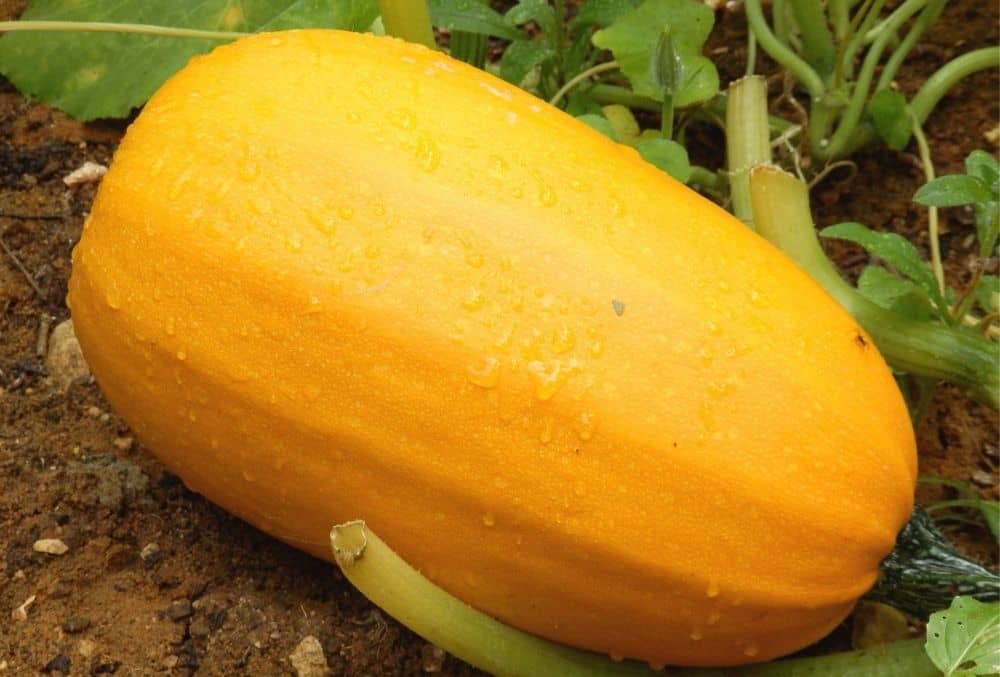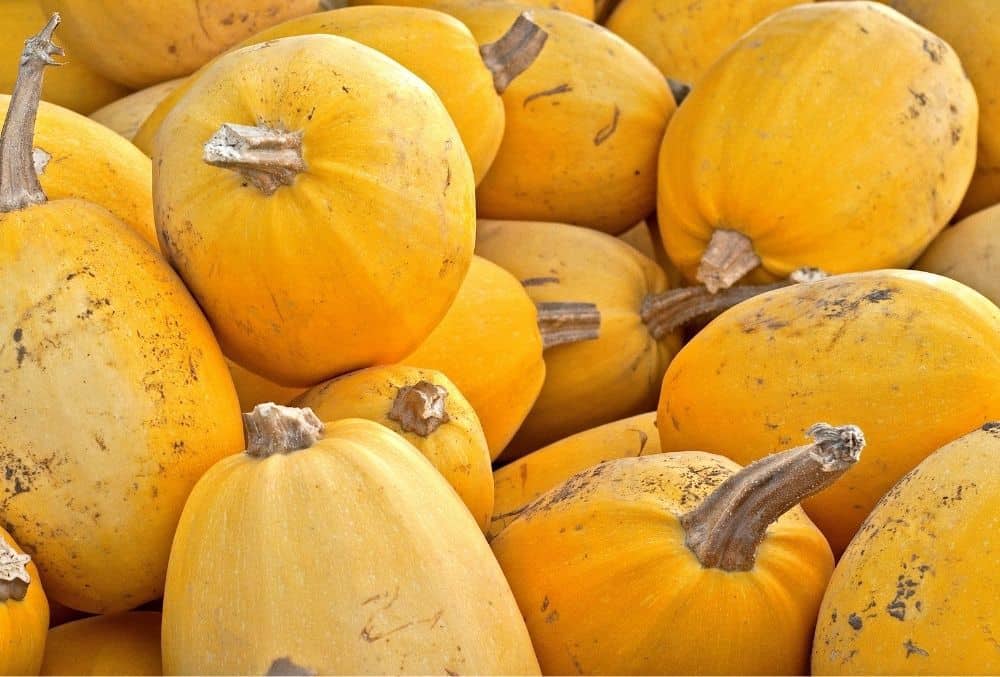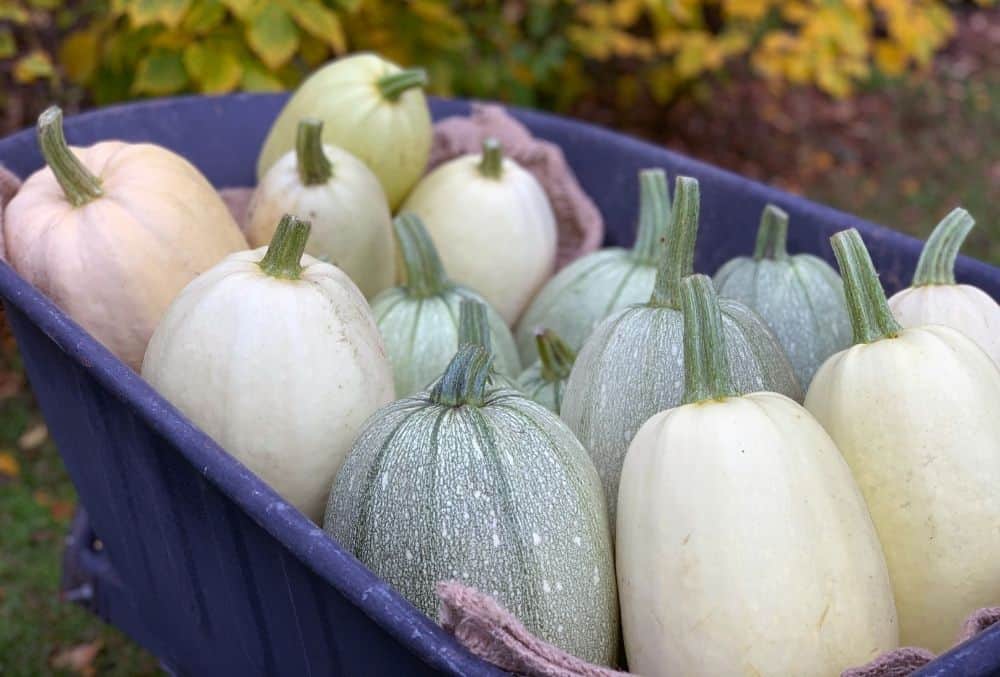Otherwise referred to as ‘vegetable spaghetti’, spaghetti squash is a delicious and nutritious alternative to purchasing store-bought spaghetti – and is the perfect growing option for those that want to reduce their reliance on heading to the grocery store each week.

Unlike any other kind of squash, spaghetti squash has unique flesh that looks very similar to spaghetti pasta when it is cooked.
Thanks to that, it means that spaghetti squash can be incorporated into a variety of different dishes, and is packed full of fortifying minerals and vitamins.
If you’re a homesteader, we’re sure that you’ll be pleased to learn that spaghetti squash is one of the easiest kinds of squash to harvest, and in this article, we’re going to be talking you through the best times to pick this healthy vegetable, as well as top tips for harvesting. Read on!
Track The Time Of Year
As a homesteader, we’re sure that you’ll agree with us when we say that the time of year is one of the most important aspects of determining when the right time to pick your fruits and vegetables is!
Typically, if you are planning on growing your own spaghetti squash, you will find that it is ready to be harvested either in the late summer or early fall, which works out to around 50 days after you notice that blooms are beginning to appear.
Determine The Ripeness
Additionally, before you begin to pick your spaghetti squash, you will also need to determine the ripeness level, as this will help you to determine whether or not your squash is ready to be picked.
Generally, when you begin to notice that your spaghetti squash has turned a deep golden color, then this will mean that the spaghetti squash has ripened and is ready to be harvested.

However, if the color of your spaghetti squash alone isn’t enough to help you decide whether or not your squash is ready to be picked, another way that you can test your squash’s ripeness level is by feeling its skin.
Typically, the strongest indicator that your spaghetti squash is ready to be picked is when its skin is difficult to break, and the best way that you can determine the skin thickness of your squash is by taking the tip of a knife and seeing if you are able to easily break through the surface.
If you are unable to, then you will know that your spaghetti squash is ready to be picked, however, if the tip of your knife penetrates the skin of your spaghetti squash very easily – then you will need to leave your spaghetti squash a little longer before picking.
In addition to the above, you should also check your spaghetti squash before picking to see whether or not it has any soft or mushy areas.
If you can see that your squash has some softer spots across its surface, then this is a strong indication that your squash is not yet ready to be picked. Another surefire sign that your squash is ready to be picked is if its vine has begun to turn a deep brown color, and is starting to shrivel up.
Harvesting Your Spaghetti Squash
When you’re sure that your spaghetti squash is ready to be picked, you will need to make sure that you are picking them correctly to prevent them from becoming damaged before they have even been used.

So, in order to harvest your spaghetti squash correctly, you will need to take a pair of shears (or pruners if you do not have any shears) and begin to gently cut the spaghetti squash from their stems.
It is important that you pick your spaghetti squash in this way, as pulling spaghetti squash too hard at their stems could pull the stem from the earth and prevent it from being used again.
To make picking more convenient, we recommend that you take a wicker basket or wheelbarrow (depending on how large the harvest is) so that you are able to easily transport your spaghetti squash from the field/garden back to your home without having to take multiple trips.
After you have picked all of your spaghetti squash, you will then need to safely store each of them. We recommend that you store all of your uncooked spaghetti squash in a cool, dry place that does not get any direct sunlight, as this could cause your spaghetti squash to spoil very quickly.
If you ensure that you are storing your spaghetti squash in a cool place (preferably with a temperature of around 60 degrees Fahrenheit) you should find that your spaghetti squash lasts you for around 3 months or so.
On the other hand, if you happen to have any leftover spaghetti squash after cooking that you do not want to throw away, then it is possible to save your cut spaghetti squash for a later date.
However, instead of storing your cut spaghetti squash in a cool, dry area of the home, you will instead need to keep your cut spaghetti squash in your fridge, as room temperature air will spoil the exposed flesh of your squash.
To extend the life of your cut squash, we recommend that you keep it inside a ziplock, fridge-friendly bag to help prevent it from spoiling. Once stored in this way, you should find that your cut spaghetti squash lasts you for around 2 weeks.
Top tip: After you have picked your spaghetti squash, take a solution of 90 parts water and 10 parts cleaning bleach and quickly wipe over the rind of each of the spaghetti squash you have picked. This solution will effectively kill any mold particles that might be present on the surface and will ensure that your spaghetti squash stays optimally ripe and fresh until you are ready to use it.
